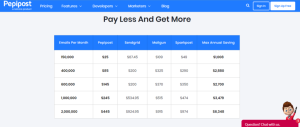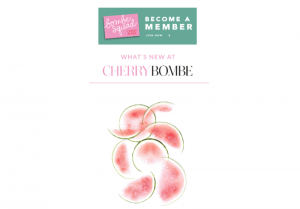Great blogs are insightful and retain attention
The most important thing to remember when writing a blog article is the content must be remarkable. Think about what new insights might the reader gain by reading each paragraph of the article. Don’t write just to rank in Google, take the time to create interesting, educational and engaging stories. Visitors typically read the title and the first paragraph or two and then decide if they want to read the rest. Therefore, keep the writing focused on your goal – excite and engage readers with each scene of your story.
If you are blogging for your business or as a hobby, the medium creates more opportunities for the author to develop thought leader status. This social rank over time will garner referrals from others with an interest in the topic area, resulting in many inbound links, and traffic to the related blog articles. Earned links are a very significant advantage of blogging. Share the articles in social channels the persona frequents as well. Social engagement helps to generate awareness of the blog, the article, and your business.
8 Best Practices for Blogging:

Learn more about Buyer Personas – Click Here
1) Blog for a particular persona’s interest, goal, problem or solution. Write with personality as if you were speaking to the reader at a party or a meeting. Consider the last party you attended, and someone asked you for advice. You engaged, told a story, related personal experience but most of all, you tried to help, educate or refer.
2) Spend 50% of your time creating great titles but most importantly blog about topics that interest the persona. There are many ways to create engaging titles. You will want a title that generates curiosity. If you get stuck, consider using the number, topic, qualifier approach as described by SEO specialist Midge Hand.
Here is Midge’s example for a “business lesson learned” post:
1. Numbered list = 6
2. Topic = important lessons learned
3. Qualifier = in 30 years of business
Resulting blog title “6 important lessons learned in 30 years of business.“
3) Choose a frequency and maintain a consistent blogging calendar. There is nothing worse that having a blog that posts three or four times a year. Visitors to your business will assume a lack of commitment or follow-through so instead of building thought leadership, a lack of consistency and quality erodes it. I find that it helps to create 3 to 5 titles first and then create a bulleted story line outline for each. Over time, I fill in the blanks based on what I learn from my daily reading and experiences. This approach to writing, makes the process fun, and the readers will acknowledge the resulting quality by subscribing and engaging.
 4) Format the blog so that it draws the readers attention and keeps them engaged. I remember as a middle school student, I had a drafting teacher who whenever we asked about spacing or positioning the drafting subject on the page, he would say, “place it where it looks pretty!” I can hear him saying those words today as I format a blog article, select valuable images, choose the right font style and fuss to make it enjoyable to read.
4) Format the blog so that it draws the readers attention and keeps them engaged. I remember as a middle school student, I had a drafting teacher who whenever we asked about spacing or positioning the drafting subject on the page, he would say, “place it where it looks pretty!” I can hear him saying those words today as I format a blog article, select valuable images, choose the right font style and fuss to make it enjoyable to read.
5) Always offer an opportunity to to the reader to conversion into a lead. There are countless businesses that invest in resources and time into a blog but do not consider the persona’s buyers journey for information. If you are offering high-quality content in your blog, it goes to say that your whitepapers or infographics would be of high quality as well. They would be inclined to request it as well. After all, your web site content has one of the best conversion rates of all marketing activities.
6) Be sure to implement Search Engine Optimization (SEO) techniques on the blog article. After all, you want visitors to find the article. Remember that modern search engines rank based on search intent and penalize pages when visitors pogo stick (pogo sticking is when a visitor comes to a page and immediately hits the back button). Don’t overdue it when it comes to SEO, write for a human, not a search engine since happy readers spend more time on the page and that behavior does the most for improving search rank. For a detailed list of blog SEO techniques, read this article.
7) You have invested a lot in writing and optimizing the article, share it using email, social media and other media where you can earn followers. Be sure only to post in places that your persona visits, and align the content with the context of the social media medium. An example of this is to pin a recipe article on a recipe Pinterest board, not a car enthusiast one. Contextual posting seems like an obvious approach, but I have seen many “spam” posts of unrelated topics to linkedIn groups as one example of unrelated placement. It annoys the readers of the group when it happens.
 Sharing blog content by email to a segmented list that has opted-in to receive information about that topic is a very effective way to create awareness for the article. Just like creating article topics is a science, creating emails that recipients don’t ignore is also a science in itself.
Sharing blog content by email to a segmented list that has opted-in to receive information about that topic is a very effective way to create awareness for the article. Just like creating article topics is a science, creating emails that recipients don’t ignore is also a science in itself.
8) Measure the results of your blog, number of views, blog subscription growth (both RSS and email), most popular author, the number and growth of inbound links. As baseball batters do not hit the ball 100% of the time, your efforts to implement these best practices will not work all of the time. By measuring the results of the articles, you gain valuable knowledge about what your personas are interested in, and the impact of each of these best-practice techniques has on your desired results.
The bottom line of Blogging Best Practice:
If you are new to blogging, consider starting where I did, by becoming Inbound Certified using the free Hubspot training and certification programs.
(203)










